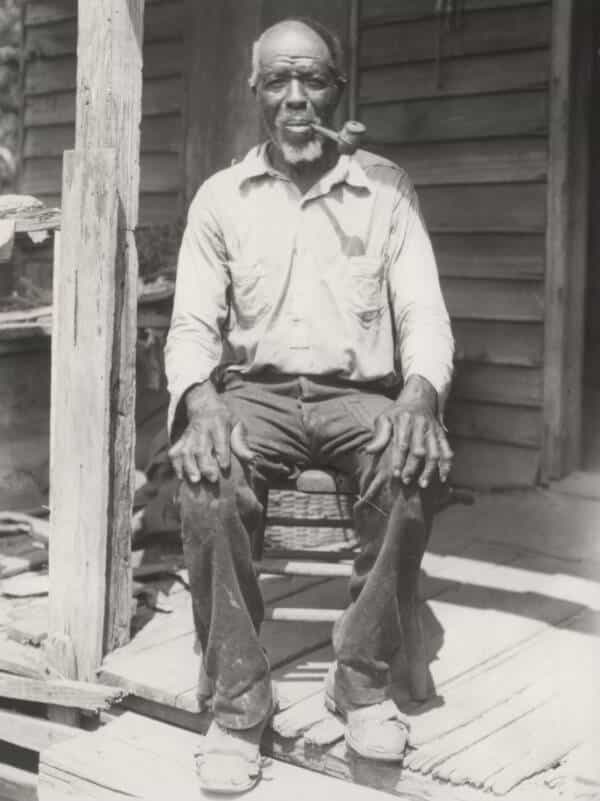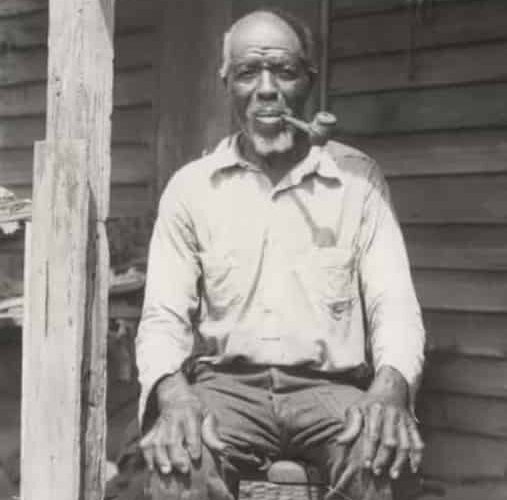One of the Last Slave Ship Survivors Shares His Story in a 1930s Interview

The last American slave ship docked illegally in Mobile, Alabama in 1860, carrying about 160 West African captives.
Among them was Cudjo Lewis, who recognized how his birth culture might be erased while toiling in this new land
A Hidden Story Finally Revealed
More than 60 years after slavery ended in the United States, a remarkable discovery was made by anthropologist Zora Neale Hurston. She found one of the last survivors of the final slave ship to bring enslaved Africans to America. His name was Oluale Kossola, later known as Cudjo Lewis.
Hurston, famous for her role in the Harlem Renaissance and her novel *Their Eyes Were Watching God*, conducted interviews with Lewis in the early 1930s. However, she faced challenges getting her work published. It wasn’t until 2018—nearly 90 years later—that her book, *Barracoon: The Story of the Last “Black Cargo”*, was finally released, bringing Lewis’ harrowing story to light.
Cudjo Lewis’ Journey from Africa
Cudjo Lewis was born Oluale Kossola in present-day Benin, West Africa. He was part of the Yoruba people and lived peacefully until a neighboring tribe, the Dahomians, attacked his village. At just 19 years old, Kossola was captured along with others, marched to the coast, and sold into slavery.
He and 120 other captives were forced onto a ship called the Clotilda, the last known slave ship to arrive in the continental United States. The journey across the Atlantic was brutal, and the captives endured unimaginable suffering on their way to Alabama.
Illegal Slave Trade and the *Clotilda
The Clotilda reached Alabama in 1860, one year before the Civil War began. While slavery was still legal in the U.S. at the time, the international slave trade had been banned for over 50 years. Laws passed in 1807 prohibited the importation of enslaved people, but illegal traders continued to smuggle them into the country.
To avoid being caught, Lewis and the others were secretly brought into Alabama under the cover of night. They were hidden in a swamp for days before being sold. To destroy evidence of their crime, the traders burned the 86-foot ship after unloading its human cargo. Incredibly, parts of the *Clotilda* were reportedly discovered in Alabama in 2018, providing physical proof of its tragic history.
The Trauma of Enslavement
Cudjo Lewis’ story gives a firsthand account of the pain and confusion of being torn from his homeland and thrust into slavery. He described being crammed into the ship with strangers and enduring months of misery during the transatlantic voyage. When they arrived in Alabama, the group was separated and sold to different owners.
“We were very sorry to be parted from each other,” Lewis told Hurston. “We spent seventy days crossing the water from Africa, and now they separate us. So, we cried. Our grief was so heavy we thought we might die from it. I dreamed about my mother and thought maybe I would die in my sleep.”
The trauma only deepened after he arrived at the plantation. No one could explain to him where he was or why he was there. The language barrier was isolating. “We didn’t know why we were taken from our country to work like this,” he said. “We wanted to talk to the other Black people, but they didn’t understand us.”
Freedom Brings New Challenges
When the Civil War began, Lewis and many other enslaved people didn’t know about it. But as time passed, they heard whispers of a war to end slavery. In April 1865, after the Confederate surrender, Union soldiers arrived where Lewis was working and told him and others they were free.
Lewis expected that freedom would come with some form of compensation for his suffering. He believed the U.S. government would provide land or resources, such as the promised “forty acres and a mule.” When he learned that no such reparations would be offered, he was deeply disappointed.
Determined to build a life, Lewis and 31 other freed individuals saved their earnings to buy land near Mobile, Alabama. They founded a community called Africatown, where they could preserve their African culture and live together in freedom.
Hurston’s Fight to Share Lewis’ Story
Zora Neale Hurston’s use of vernacular language in her interviews and writings was controversial at the time. Some Black intellectuals believed it reinforced harmful stereotypes, while others admired her dedication to authenticity. Hurston refused to change Lewis’ dialect in her manuscript, which caused publishers in the 1930s to reject her work.
Though it took decades, Hurston’s decision to preserve Lewis’ voice means that modern readers can experience his story as he told it. The publication of *Barracoon* in 2018 was a triumph for historical storytelling, offering a rare and powerful glimpse into the experiences of one of the last known survivors of the transatlantic slave trade.
Remembering a Painful Legacy
Cudjo Lewis’ story is more than just a personal narrative; it’s a window into the larger history of slavery, resilience, and survival. Through his words, we can better understand the profound loss and injustice endured by millions of Africans who were taken from their homes and families.
Even after gaining freedom, Lewis and others like him faced enormous challenges. Yet, their determination to rebuild their lives and communities is a testament to their strength and humanity. Africatown stands as a reminder of this legacy—a place where history, culture, and memory come together to honor those who endured one of the darkest chapters in human history.
Today, thanks to Zora Neale Hurston and her tireless efforts, the world can hear Cudjo Lewis’ voice and learn from his story—a story of loss, survival, and hope for a better future.
FAQ: Cudjo Lewis, the Clotilda, and Zora Neale Hurston
Who was Cudjo Lewis?
Cudjo Lewis, originally named Oluale Kossola, was one of the last survivors of the transatlantic slave trade. Captured at 19 from his village in West Africa, he was transported to Alabama aboard the *Clotilda*, the last known slave ship to reach the U.S.
What was the Clotilda?
The Clotilda was an illegal slave ship that brought 120 captives to Alabama in 1860, decades after the U.S. banned the international slave trade in 1807. To hide their crime, the ship’s operators burned it after unloading the captives. Parts of the ship were rediscovered in 2018.
What happened to Cudjo Lewis after emancipation?
After gaining freedom following the Civil War, Cudjo Lewis was disappointed that no reparations or land were provided. He and 31 other freed Africans saved money to buy land and established Africatown near Mobile, Alabama, preserving their culture and community.
How did Zora Neale Hurston preserve Lewis’ story?
Zora Neale Hurston, an anthropologist and writer, interviewed Cudjo Lewis in the 1930s. Her work, Barracoon: The Story of the Last “Black Cargo”, captures his experiences in his own words. The book was published in 2018 after nearly 90 years of delays, preserving his unique perspective and voice.
Why is Lewis’ story significant?
Cudjo Lewis’ account provides a rare, firsthand perspective of the transatlantic slave trade, the trauma of enslavement, and the resilience of freed Africans who rebuilt their lives despite immense hardship. His story connects personal experiences to the broader history of slavery in the U.S.

